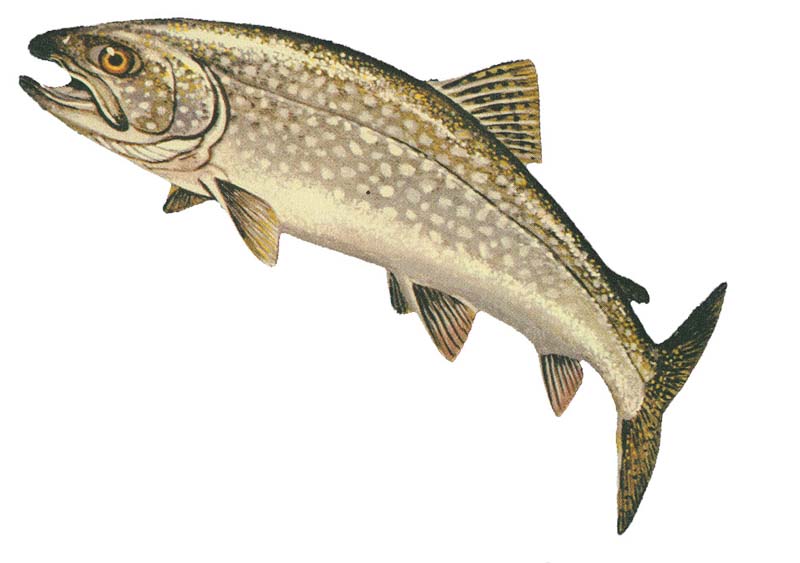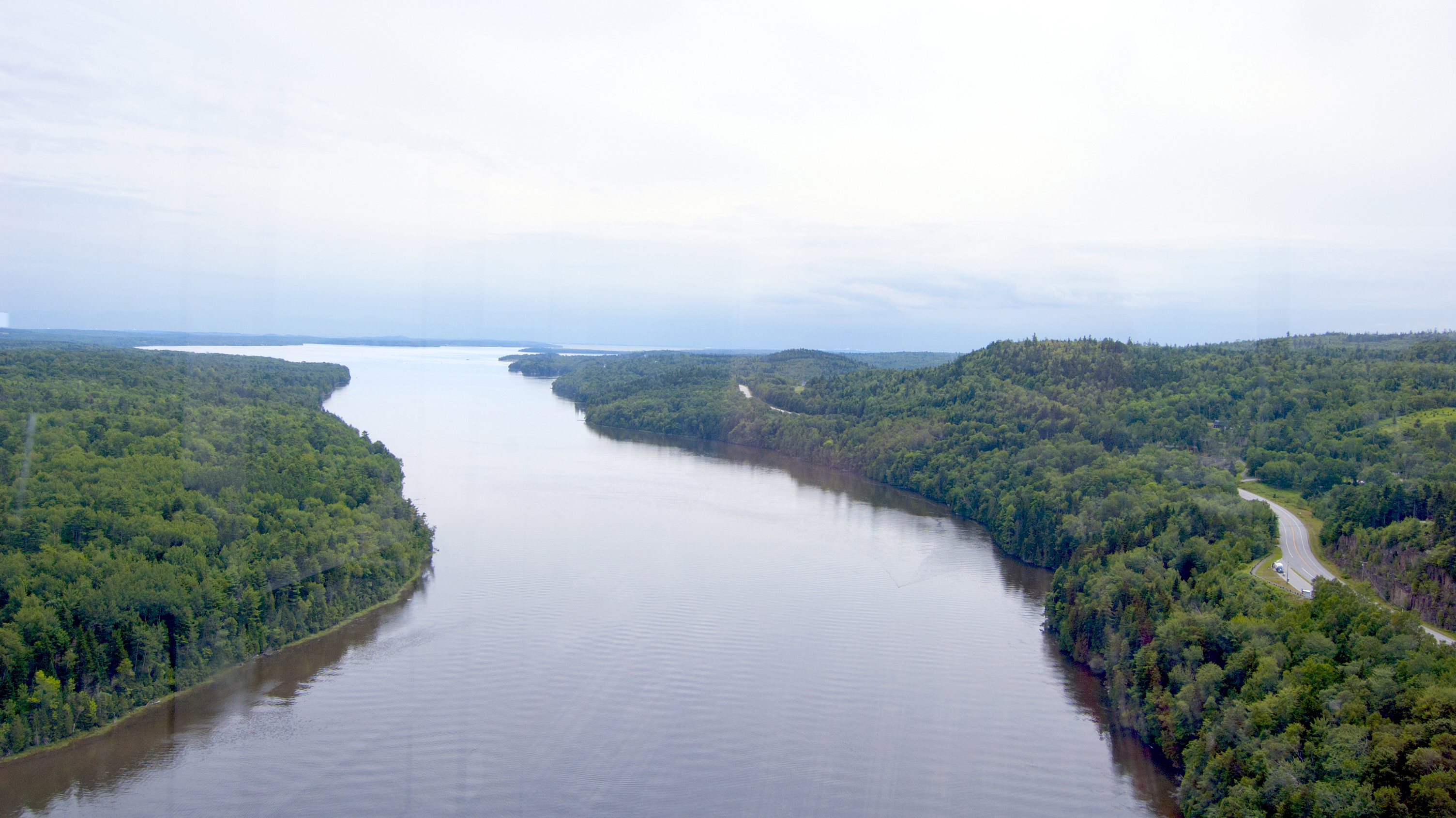|
Debsconeag Lakes
The chain of Debsconeag Lakes in the North Maine Woods is a tributary to the West Branch Penobscot River. The flow sequence is from the Sixth Debsconeag Lake through the Fifth, Fourth, Third, Second, and First into the Debsconeag Deadwater on the West Branch. First Debsconeag Lake The first lake is the second-largest of the chain, and holds more water than the combined total of the four smaller lakes. The west end of the first lake receives discharge from the upstream lakes of the Debsconeag chain, while the eastern end overflows into the Debsconeag Deadwater on the West Branch at about the same level as the first lake. The first lake supports a population of lake trout and land-locked Atlantic salmon. Second Debsconeag Lake The second lake is the fourth-largest of the chain, but twice as large as the fifth lake. In addition to discharge from the upstream lakes of the Debsconeag chain, the west end of the second lake receives drainage from Big and Little Beaver Ponds, Big and ... [...More Info...] [...Related Items...] OR: [Wikipedia] [Google] [Baidu] |
University Of Maine
The University of Maine (UMaine or UMO) is a Public university, public Land-grant university, land-grant research university in Orono, Maine. It was established in 1865 as the land-grant college of Maine and is the Flagship universities, flagship university of the University of Maine System. It is Carnegie Classification of Institutions of Higher Education, classified by Carnegie as among "R1: Doctoral Universities – Very high research activity". With an enrollment of approximately 11,500 students, UMaine is the state's largest college or university. The University of Maine's athletic teams, nicknamed the Maine Black Bears, Black Bears, are Maine's only NCAA Division I, Division I athletics program. Maine Black Bears men's ice hockey, Maine's men's ice hockey team has won two national championships. History The University of Maine was founded in 1862 as a function of the Morrill Land-Grant Colleges Act, Morrill Act, signed by President Abraham Lincoln. Established in 1865 as ... [...More Info...] [...Related Items...] OR: [Wikipedia] [Google] [Baidu] |
North Maine Woods
The North Maine Woods is the northern geographic area of the state of Maine in the United States. The thinly populated region is overseen by a combination of private individual and private industrial owners and state government agencies, and is divided into 155 unincorporated townships within the NMW management area. There are no towns or paved roads. The region covers more than of forest land bordered by Canada to the west and north and by the early 20th century transportation corridors of the Canadian Pacific International Railway of Maine to the south and the Bangor and Aroostook Railroad Ashland branch to the east. It includes western Aroostook and northern Somerset, Penobscot, and Piscataquis counties. Much of the woods are currently owned by timber corporations, including Seven Islands Land Company, Plum Creek, Maibec, Orion Timberlands and J. D. Irving. Ownership changes hands quite frequently and is often difficult to determine. Its main products are timber for pulp ... [...More Info...] [...Related Items...] OR: [Wikipedia] [Google] [Baidu] |
West Branch Penobscot River
The West Branch Penobscot River is a U.S. Geological Survey. National Hydrography Dataset high-resolution flowline dataThe National Map accessed June 22, 2011 tributary of the Penobscot River through the North Maine Woods in Maine. The river is also known as ''Abocadneticook'' (Abenaki for "stream narrowed by mountains"), ''Kahgognamock'', and ''Kettegwewick'' (Abenaki for "place of the great stream"). Course The river flows from Seboomook Lake in Seboomook, Somerset County. The lake's principal inflows are the North Branch and South Branch Penobscot River. From Seboomook Dam () the river runs about east and northeast to Chesuncook Lake, thence (after flowing through Chesuncook) about southeast through the southwest corner of Baxter State Park to the Pemadumcook Chain of Lakes, thence generally east to its confluence with the Penobscot's East Branch in Medway, Penobscot County. History The west branch drains spruce forests of the southern part of the Maine North W ... [...More Info...] [...Related Items...] OR: [Wikipedia] [Google] [Baidu] |
Lake Trout
The lake trout (''Salvelinus namaycush'') is a freshwater char living mainly in lakes in northern North America. Other names for it include mackinaw, namaycush, lake char (or charr), touladi, togue, and grey trout. In Lake Superior, it can also be variously known as siscowet, paperbelly and lean. The lake trout is prized both as a game fish and as a food fish. Those caught with dark coloration may be called ''mud hens''. Taxonomy It is the only member of the subgenus ''Cristovomer'', which is more derived than the subgenus '' Baione'' (the most basal clade of ''Salvelinus'', containing the brook trout (''S. fontinalis'') and silver trout (''S. agasizii'')) but still basal to the other members of ''Salvelinus''. Range From a zoogeographical perspective, lake trout have a relatively narrow distribution. They are native only to the northern parts of North America, principally Canada, but also Alaska and, to some extent, the northeastern United States. Lake trout have been wide ... [...More Info...] [...Related Items...] OR: [Wikipedia] [Google] [Baidu] |
Atlantic Salmon
The Atlantic salmon (''Salmo salar'') is a species of ray-finned fish in the family Salmonidae. It is the third largest of the Salmonidae, behind Siberian taimen and Pacific Chinook salmon, growing up to a meter in length. Atlantic salmon are found in the northern Atlantic Ocean and in rivers that flow into it. Most populations are anadromous, hatching in streams and rivers but moving out to sea as they grow where they mature, after which the adults seasonally move upstream again to spawn. When the mature fish re-enter rivers to spawn, they change in colour and appearance. Some populations of this fish only migrate to large lakes, and are "landlocked", spending their entire lives in freshwater. Such populations are found throughout the range of the species. Unlike Pacific species of salmon, ''S. salar'' is iteroparous, which means it can survive spawning and return to sea to repeat the process again in another year. Such individuals can grow to extremely large sizes, althoug ... [...More Info...] [...Related Items...] OR: [Wikipedia] [Google] [Baidu] |
Brook Trout
The brook trout (''Salvelinus fontinalis'') is a species of freshwater fish in the char genus ''Salvelinus'' of the salmon family Salmonidae. It is native to Eastern North America in the United States and Canada, but has been introduced elsewhere in North America, as well as to Iceland, Europe, and Asia. In parts of its range, it is also known as the eastern brook trout, speckled trout, brook charr, squaretail, brookie or mud trout, among others. A potamodromous population in Lake Superior, as well as an anadromous population in Maine, is known as coaster trout or, simply, as coasters. The brook trout is the state fish of nine U.S. states: Michigan, New Hampshire, New Jersey, New York, North Carolina, Pennsylvania, Vermont, Virginia, and West Virginia, and the Provincial Fish of Nova Scotia in Canada. Systematics and taxonomy The brook trout was first scientifically described as ''Salmo fontinalis'' by the naturalist Samuel Latham Mitchill in 1814. The specific epithet "''fontina ... [...More Info...] [...Related Items...] OR: [Wikipedia] [Google] [Baidu] |
Pumpkinseed
The pumpkinseed (''Lepomis gibbosus''), also referred to as pond perch, common sunfish, punkie, sunfish, sunny, and kivver, is a small/medium-sized North American freshwater fish of the genus ''Lepomis'' (true sunfishes), from family Centrarchidae (sunfishes, crappies and black basses) in the order Perciformes. Distribution and habitat The pumpkinseed's natural range in North America is from New Brunswick down the east coast to South Carolina. It then runs inland to the middle of North America, and extends through Iowa and back through Pennsylvania. Pumpkinseed sunfish have however been introduced throughout most of North America. They can now be found from Washington and Oregon on the Pacific Coast to Georgia on the Atlantic Coast. Yet they are primarily found in the northeastern United States and more rarely in the south-central or southwestern region of the continent. [...More Info...] [...Related Items...] OR: [Wikipedia] [Google] [Baidu] |
Yellow Perch
The yellow perch (''Perca flavescens''), commonly referred to as perch, striped perch, American perch, American river perch or preacher is a freshwater perciform fish native to much of North America. The yellow perch was described in 1814 by Samuel Latham Mitchill from New York. It is closely related, and morphologically similar to the European perch (''Perca fluviatilis''); and is sometimes considered a subspecies of its European counterpart. Other common names for yellow perch include American perch, coontail, lake perch, raccoon perch, ring-tail perch, ringed perch, and striped perch. Another nickname for the perch is the Dodd fish. Latitudinal variability in age, growth rates, and size have been observed among populations of yellow perch, likely resulting from differences in day length and annual water temperatures. In many populations, yellow perch often live 9 to 10 years, with adults generally ranging from in length. The world record yellow perch (; ) was caught in May 1 ... [...More Info...] [...Related Items...] OR: [Wikipedia] [Google] [Baidu] |
Lakes Of Piscataquis County, Maine
A lake is an area filled with water, localized in a basin, surrounded by land, and distinct from any river or other outlet that serves to feed or drain the lake. Lakes lie on land and are not part of the ocean, although, like the much larger oceans, they do form part of the Earth's water cycle. Lakes are distinct from lagoons, which are generally coastal parts of the ocean. Lakes are typically larger and deeper than ponds, which also lie on land, though there are no official or scientific definitions. Lakes can be contrasted with rivers or streams, which usually flow in a channel on land. Most lakes are fed and drained by rivers and streams. Natural lakes are generally found in mountainous areas, rift zones, and areas with ongoing glaciation. Other lakes are found in endorheic basins or along the courses of mature rivers, where a river channel has widened into a basin. Some parts of the world have many lakes formed by the chaotic drainage patterns left over from the last ice ... [...More Info...] [...Related Items...] OR: [Wikipedia] [Google] [Baidu] |
Penobscot River
The Penobscot River (Abenaki: ''Pαnawάhpskewtəkʷ'') is a U.S. Geological Survey. National Hydrography Dataset high-resolution flowline dataThe National Map, accessed June 22, 2011 river in the U.S. state of Maine. Including the river's West Branch and South Branch increases the Penobscot's length to , making it the second-longest river system in Maine and the longest entirely in the state. Its drainage basin contains . It arises from four branches in several lakes in north-central Maine, which flow generally east. After the uniting of the West Branch with the East Branch at Medway (), the Penobscot flows south, past the city of Bangor, where it becomes navigable. Also at Bangor is the tributary Kenduskeag Stream. It empties into the Atlantic Ocean in Penobscot Bay. It is home to the Penobscot people that live on Indian Island, and considered to be The People's lifeblood. History Norumbega Most historians have accepted the Penobscot region as Jean Allefonsce's ... [...More Info...] [...Related Items...] OR: [Wikipedia] [Google] [Baidu] |





.jpg)

